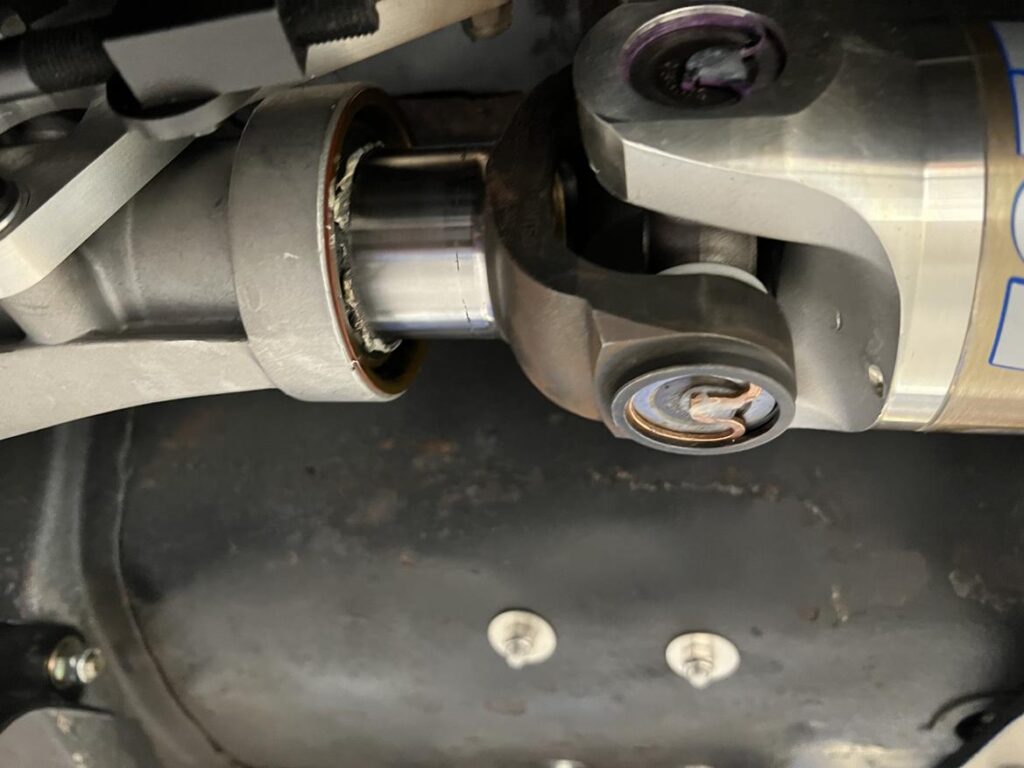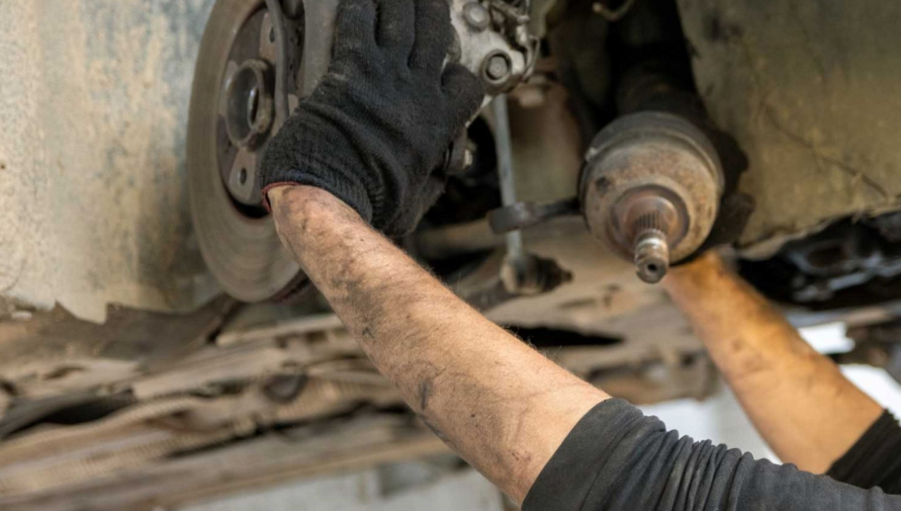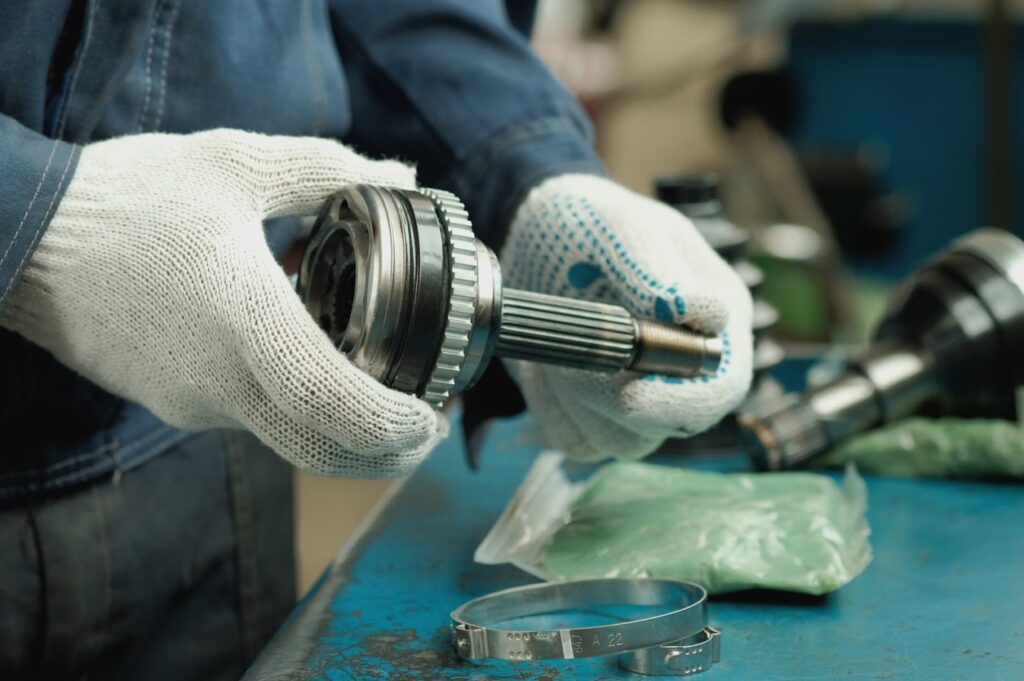2016 Ford Mustang driveshaft balancing is crucial to ensure smooth driving and eliminate vibrations, especially at higher speeds. If the driveshaft is unbalanced, it can cause discomfort, noise, and damage to other drivetrain components.
If you’re an owner of a 2016 Ford Mustang and are experiencing vibrations or strange noises, one of the potential causes could be an unbalanced driveshaft. A driveshaft plays a crucial role in the performance and handling of your vehicle, and an unbalanced one can lead to significant issues if left unchecked.
In this guide, we’ll explain the importance of driveshaft balancing, how to identify and fix issues, and why this is so essential for keeping the Mustang running smoothly.

Contents
- 1 Driveshaft Balancing
- 2 Why Driveshaft Balancing is Important
- 3 Symptoms of an Unbalanced Driveshaft in the 2016 Ford Mustang
- 4 How Driveshaft Balancing Works
- 5 Steps to Balance the 2016 Ford Mustang Driveshaft
- 6 Upgrading the Driveshaft Components
- 7 When to Seek Professional Help
- 8 Frequently Asked Questions
- 9 Conclusion
Driveshaft Balancing
The driveshaft in the 2016 Ford Mustang is a critical component that connects the transmission to the rear differential. It helps transfer the engine’s power to the wheels, enabling the car to move. If the driveshaft is out of balance, it can cause vibrations, noise, and can even lead to damage to other drivetrain components. Balancing the driveshaft ensures that it operates smoothly, preventing these issues and keeping your Mustang running at its best.
Why Driveshaft Balancing is Important
When a driveshaft becomes unbalanced, the rotational forces acting on it create vibrations. These vibrations can travel throughout the vehicle, causing discomfort for the driver and passengers and potentially damaging suspension parts and tires. For a performance car like the 2016 Ford Mustang, where smooth driving and precision handling are essential, an imbalanced driveshaft can significantly affect driving experience and performance.
Unbalanced driveshafts are also more prone to wear and tear, which can lead to costly repairs down the line. Balancing the driveshaft regularly helps ensure your Mustang runs smoothly and avoids unnecessary damage. It’s essential for maintaining the longevity of the vehicle’s drivetrain system and overall safety.
Symptoms of an Unbalanced Driveshaft in the 2016 Ford Mustang
You can usually detect an unbalanced driveshaft through the following symptoms:
- Vibration: If you feel vibrations through the steering wheel, pedals, or seat, especially when the car is traveling at specific speeds (commonly between 50-80 mph), this is a strong indicator that your driveshaft may be unbalanced.
- Noise: A clicking, clunking, or squeaking sound during acceleration or deceleration could indicate that the driveshaft or other components of the drivetrain are out of alignment or unbalanced.
- Handling Issues: If your Mustang feels like it’s pulling to one side or if you notice uneven resistance while steering, it could be a result of an unbalanced driveshaft affecting the suspension system.
If you’re experiencing any of these symptoms, it’s important to have your driveshaft checked as soon as possible to prevent further damage and maintain the safety and performance of your vehicle.

How Driveshaft Balancing Works
Balancing a driveshaft involves ensuring that it rotates evenly without causing any undue vibrations. This is usually achieved by placing the driveshaft on a specialized balancing machine, which can detect any imbalances in the shaft’s rotation. The process is highly precise, requiring accurate measurement to determine the exact location and extent of the imbalance.
Once the imbalance is detected, small weights are added to the driveshaft to counteract the uneven rotation. This process restores balance and allows the driveshaft to rotate smoothly, eliminating any vibrations or noise that could have been caused by an unbalanced shaft.
While driveshaft balancing is something that professionals typically handle, some vehicle owners may choose to perform a DIY balancing. This involves marking the driveshaft’s position, removing it, rotating it, and testing the vehicle at different angles. However, achieving proper balancing through DIY methods can be difficult, so professional help is often recommended for accurate results.
Steps to Balance the 2016 Ford Mustang Driveshaft
Balancing the driveshaft of your 2016 Ford Mustang is essential for smooth performance and to avoid unwanted vibrations. Below are the steps you can follow to either perform a DIY balancing or seek professional assistance for the best results.
1. Confirm the Driveshaft Is the Issue
Before you jump to conclusions, make sure the driveshaft is the source of the issue. Unbalanced wheels, faulty suspension, or worn-out brakes can also lead to similar symptoms. If you’ve ruled these out and still experience vibrations, it’s time to look at the driveshaft.
2. Inspect the Driveshaft for Damage
If your Mustang’s driveshaft is bent, cracked, or shows signs of wear on its U-joints, it cannot be balanced. You’ll need to replace it rather than attempt to balance it. Inspecting the driveshaft for visible damage is a important step before proceeding with balancing.
3. Professional Balancing Method
The best way to balance a driveshaft is by using a professional balancing machine. This device can detect any imbalance and adjust the shaft by adding weights at the correct spots. While this is the most precise and effective method, it does require special equipment and expertise.
4. DIY Balancing Method
If you’re feeling confident and have some mechanical experience, you can attempt a DIY balancing process:
- Mark the Driveshaft: Mark both the driveshaft and the pinion flange to keep track of the positions.
- Remove and Rotate the Driveshaft: Remove the driveshaft and rotate it by 180 degrees. Reinstall it and test drive the car.
- Repeat as Necessary: If the vibrations persist, rotate the driveshaft in 90-degree increments and test again. Keep adjusting until the vibrations reduce.
While this method can work in some cases, it is not as reliable as a professional service.
Upgrading the Driveshaft Components
For Mustang owners looking for better performance, upgrading components such as the center support bearing or the driveshaft itself can be beneficial. These upgrades are especially useful for high-performance Mustangs or those modified for better handling and power.
- Performance Center Support Bearing: A high-performance bearing can help keep the driveshaft aligned more accurately, reducing vibrations.
- Upgraded Driveshafts: Many aftermarket driveshafts are lighter and stronger than the stock version, providing smoother performance and less risk of imbalance.
When to Seek Professional Help
If you’ve tried balancing the driveshaft yourself or have trouble identifying the cause of the vibrations, it’s best to consult a professional mechanic. A skilled mechanic can ensure that the issue is properly diagnosed and that your Mustang’s driveshaft is balanced correctly.
Frequently Asked Questions
Here are some FAQs about Ford Mustang driveshaft balancing –
1. How do I know if my 2016 Ford Mustang’s driveshaft is unbalanced?
If you notice vibrations through the steering wheel, seat, or pedals, especially at higher speeds (50-80 mph), this could indicate an unbalanced driveshaft. Other signs include noise during acceleration or deceleration and steering issues.
2. Can I balance the driveshaft myself?
While it’s possible to balance the driveshaft yourself by rotating it in increments, achieving precise balance is difficult without specialized equipment. Professional balancing is recommended for accurate results.
3. What causes a driveshaft to become unbalanced?
Common causes of imbalance include worn-out or damaged U-joints, bent shafts, and improper installation. Over time, the driveshaft can also become misaligned due to wear and tear.
4. How often should I balance my driveshaft?
There’s no set schedule for balancing your driveshaft, but it should be checked if you experience vibrations, noises, or handling issues. Regular inspections can help catch any issues early.
5. Will balancing the driveshaft improve my Mustang’s performance?
Yes, balancing the driveshaft ensures smoother operation, reduces vibrations, and helps maintain overall performance. It also reduces the strain on other drivetrain components, extending their lifespan.
Conclusion
Balancing the driveshaft of your 2016 Ford Mustang is important for smooth driving and performance. If you experience any vibrations, noises, or handling issues, the driveshaft could be the problem. By understanding how driveshaft balancing works, performing the necessary inspections, and either attempting DIY methods or seeking professional help, you can ensure your Mustang continues to run at its best.




